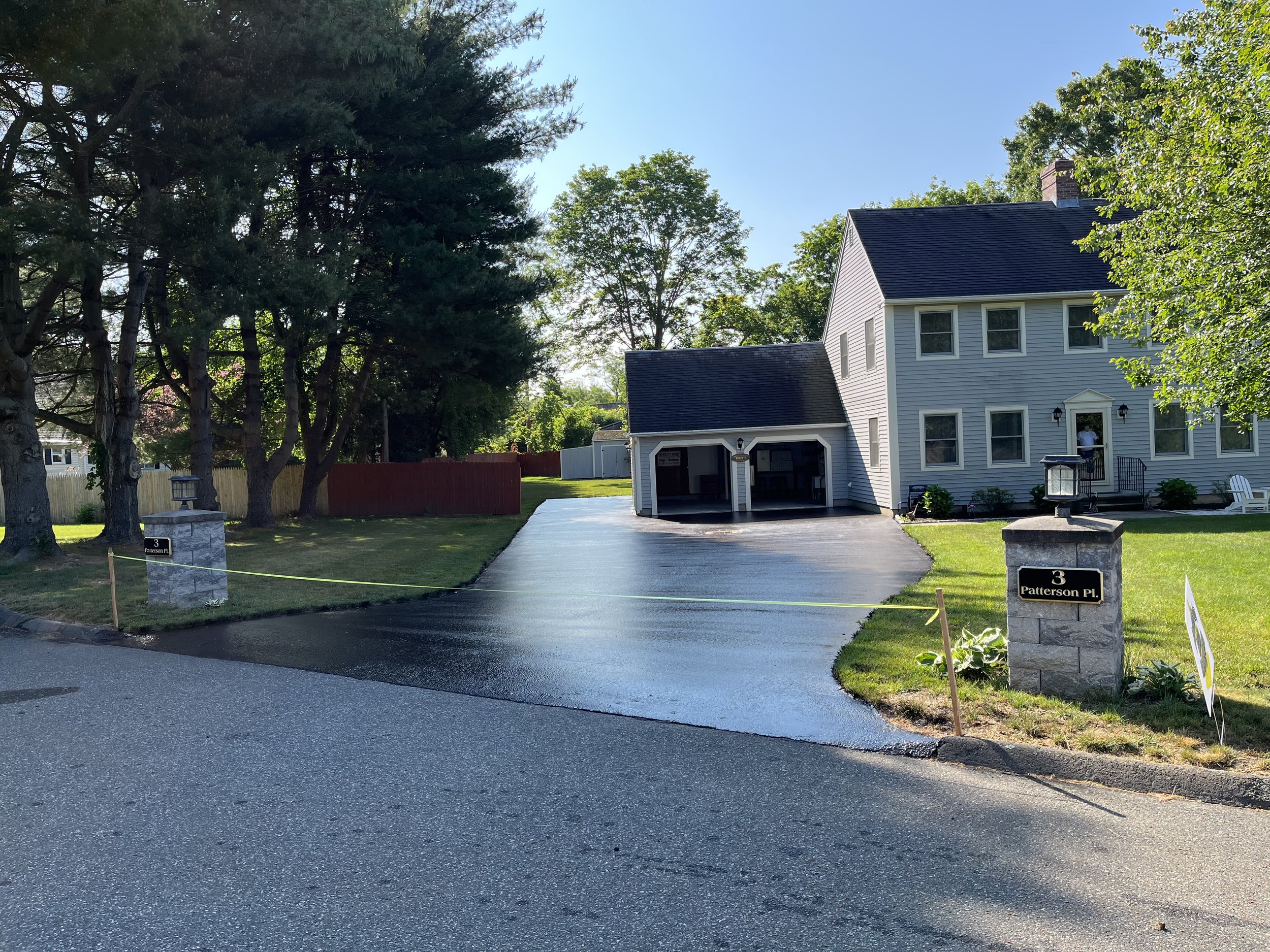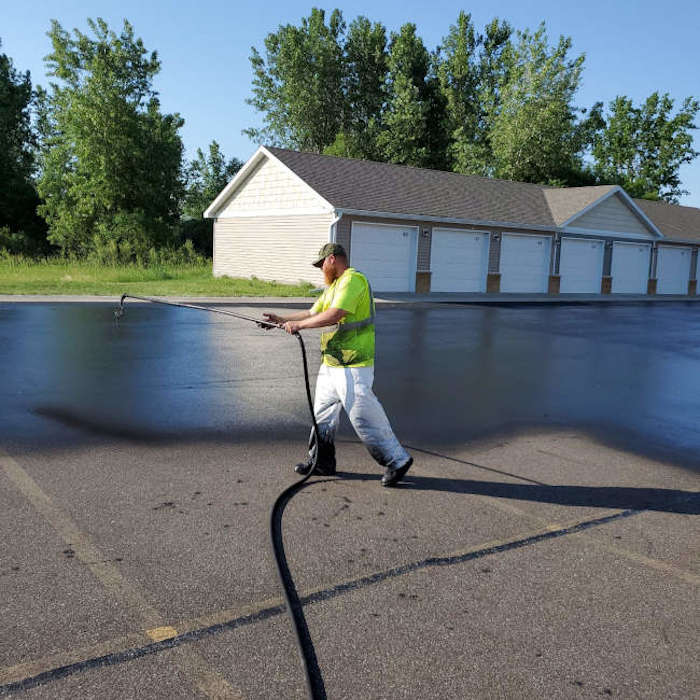Elevate Commercial Appeal: Hot Mix Asphalt Sealing for Angled Parking Lots
Elevate Commercial Appeal: Hot Mix Asphalt Sealing for Angled Parking Lots
Blog Article
Warm Mix Asphalt: A Lasting Service for Sidewalk
Hot Mix Asphalt (HMA) has arised as a leading lasting selection for sidewalk options, offering a myriad of ingenious modern technologies and ecological benefits. Its capacity to minimize and reuse materials energy intake offers an engaging case for its fostering in road construction projects. The long-lasting performance and sturdiness of HMA make it a preferred option for facilities advancement. As the demand for environment-friendly building methods grows, discovering the nuances of HMA's sustainability can give useful insights into the future of pavement remedies.
Environmental Advantages of Hot Mix Asphalt

Additionally, Warm Mix Asphalt aids to mitigate metropolitan warmth island effects. Its dark color absorbs sunlight, lowering the amount of heat mirrored back into the atmosphere contrasted to lighter-colored sidewalks. This can decrease ambient temperature levels in city areas, lowering the need for a/c and inevitably decreasing power consumption.
In addition, Hot Mix Asphalt adds to boosted stormwater monitoring. Its porous nature allows water to charge and penetrate the sidewalk groundwater products, lowering drainage and the threat of flooding. These environmental benefits make Hot Mix Asphalt a sustainable choice for paving roads and freeways.
Power Performance in HMA Production
Is energy effectiveness a critical factor in the production of Hot Mix Asphalt (HMA)? Definitely. Power plays a significant role in the manufacturing of HMA, influencing both price and ecological sustainability. One crucial element of energy efficiency in HMA production is making use of cozy mix asphalt (WMA) modern technologies (commercial parking lot paving). WMA permits the mixing and placement of asphalt at lower temperature levels contrasted to typical warm mix asphalt, leading to lowered power consumption during production. This process not only decreases gas use but also lowers greenhouse gas exhausts, making it an extra eco-friendly alternative.
Moreover, advancements in plant innovations have actually led to more energy-efficient HMA manufacturing processes. By enhancing power usage in HMA manufacturing, the industry can lower its carbon impact while keeping premium sidewalk materials.
Recyclability of Warm Mix Asphalt
The recyclability of Hot Mix Asphalt (HMA) is an essential facet of its sustainability and lasting environmental effect. HMA is one of the most recycled products in the USA, with over 100 million lots of redeemed asphalt sidewalk (RAP) being reused yearly in new pavement building and construction. Reusing HMA offers several environmental benefits, such as minimizing the demand for virgin materials, reducing power intake throughout manufacturing, and lowering the quantity of waste sent out to landfills.
The process of recycling HMA involves milling the existing pavement, crushing it into smaller items, and mixing it with brand-new accumulation and asphalt binder to produce a recycled mix. This recycled mix can often carry out in addition to and even much better than traditional HMA, while needing less basic materials and generating lower greenhouse gas emissions. By incorporating RAP into new sidewalk tasks, roadway companies can preserve all-natural sources, decrease prices, and decrease the ecological impact of roadway building and construction and upkeep tasks. Generally, the recyclability of HMA plays a significant function in promoting sustainable methods within the pavement industry.

Long-Term Efficiency of HMA
Asphalt pavements show durability and resilience over an extended period, reflecting the long-term performance of Hot Mix Asphalt (HMA) The longevity of HMA can be attributed to its ability to endure hefty web traffic tons, extreme climate condition, and the impacts of aging. Studies have shown that properly designed and effectively created HMA sidewalks can last for twenty years or more with regular upkeep. The trick to taking full advantage of the long-lasting performance of HMA hinges on making use of high-quality products, complying with finest practices in construction, and blog executing effective upkeep approaches. Appropriate drain, routine evaluations, and timely repairs are essential for preserving the structural honesty of HMA sidewalks with time. Furthermore, improvements in HMA modern technology, such as using polymer-modified binders and warm mix asphalt, have actually further improved the longevity and long life of HMA sidewalks. By prioritizing quality construction and maintenance methods, HMA proceeds to show itself as a sustainable and affordable service for long-lasting sidewalk framework.

HMA: Durability and Sustainability
Showing both sturdiness and sustainability, Warm Mix Asphalt (HMA) has actually become a keystone in the construction of durable pavement frameworks - angled parking. HMA's longevity comes from its capacity to endure hefty loads, extreme climate condition, and high traffic volumes, making it a reliable option for highways, highways, and flight terminal runways. The structure of HMA, which commonly includes accumulations, binder, and filler, plays an essential function in boosting its longevity and resistance to tear and put on
Moreover, HMA's sustainability exists in its recyclability and energy-efficient production process. The capacity to reuse reclaimed asphalt pavement (RAP) in brand-new HMA combinations decreases the need for virgin products and decreases the environmental effect of sidewalk building and construction and upkeep. Additionally, the energy effectiveness of generating HMA hinges on its lower mixing temperatures contrasted to various other pavement materials, bring about decreased power intake and find more info greenhouse gas emissions.
Final Thought
To conclude, hot mix asphalt (HMA) provides a lasting option for sidewalk with its eco friendly qualities. HMA's recyclability, power efficiency in production, and long-lasting resilience make it an eco-friendly option for roadway construction. By saving natural deposits, decreasing waste, and reducing greenhouse gas discharges, HMA plays a vital role in advertising sustainability in framework development. Its capacity to minimize metropolitan warmth island impacts better emphasizes its value in developing durable and ecologically mindful sidewalk systems.
HMA is one of the most recycled materials in the United States, with over 100 million bunches of recovered asphalt pavement (RAP) being recycled yearly in brand-new pavement building and construction.The process of reusing HMA includes milling the existing sidewalk, crushing it right into smaller sized pieces, and blending it with new accumulation and asphalt binder to create a recycled mix.Asphalt sidewalks demonstrate longevity and durability over an extensive period, mirroring the long-lasting efficiency of Hot Mix Asphalt (HMA) In addition, developments in HMA modern technology, such as the use of polymer-modified binders and cozy sites mix asphalt, have better improved the durability and durability of HMA sidewalks. The ability to recycle reclaimed asphalt pavement (RAP) in brand-new HMA mixtures minimizes the need for virgin products and minimizes the ecological effect of sidewalk construction and upkeep.
Report this page